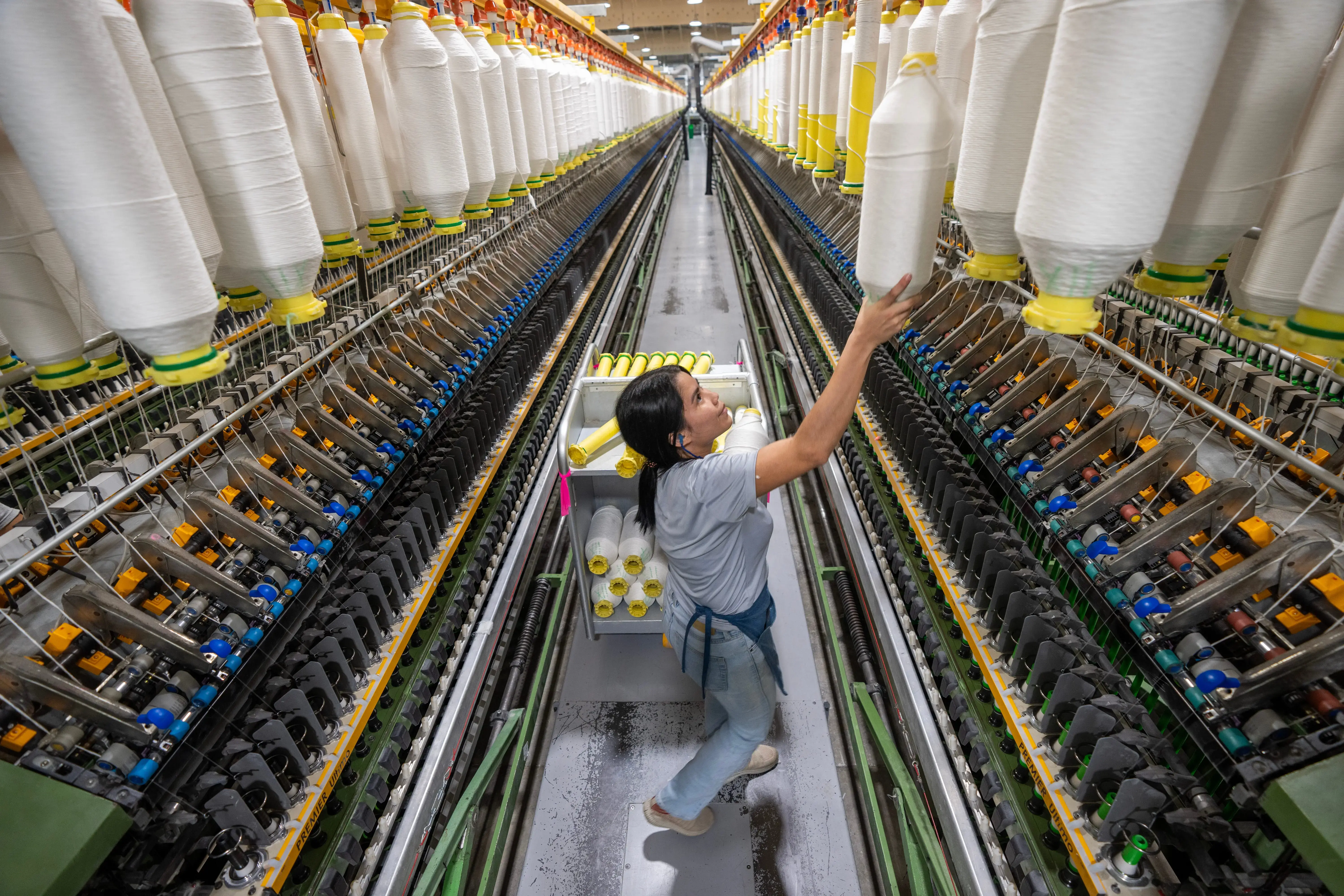Latin America
Related: About this forumAs Apparel Makers Move Work From China to Central America, Jobs Could Dent Migration Crisis
JUNE 12, 2024
Authors:
Rick Barrett
GRANTEE
Mark Hoffman
GRANTEE

A worker tends to a spinning machine at Parkdale Mills in Choloma, Honduras. The city is about a 45-minute drive from the industrial hub of San Pedro Sula, a textile manufacturing center. Honduras uses about 60% of all cotton grown in the U.S. Image by Mark Hoffman/Milwaukee Journal Sentinel.
This is part three of a five-part series.
CHOLOMA, Honduras — The clothing made in factories here in Honduras, and in Guatemala and El Salvador, is the epitome of the American Midwest.
It's practical, affordable apparel sold in stores such as Target, Walmart and Kohl's. It's also work uniforms for technicians, mechanics and restaurant workers.
Moreover, the jobs created in the apparel factories and textile mills are a partial solution to the migration crisis at the U.S. southern border.
Some items produced in this region, known as the Northern Triangle of Central America, were previously made in China. Now, they're examples of manufacturing that’s moved closer to the U.S. consumer in what’s called “nearshoring." The strategy comes with political and economic benefits, the first of which is keeping in place workers who might otherwise attempt to migrate to the United States in an often perilous and unsuccessful journey from South and Central America through Mexico.
The U.S. Border Patrol said it encountered 541,000 foreign nationals from the region in one year alone, 2022.
More:
https://pulitzercenter.org/stories/apparel-makers-move-work-china-central-america-jobs-could-dent-migration-crisis
~ ~ ~
You can see the first two parts of the series at this link:
Bringing It Home: Our series on how manufacturing is returning to the U.S.
Milwaukee Journal Sentinel reporter Rick Barrett and photographer Mark Hoffman examine the slow but promising resurgence of American manufacturing.
StaffMilwaukee Journal Sentinel
More:
https://www.jsonline.com/story/news/2024/06/12/bringing
-it-home-series-on-the-return-of-manufacturing-jobs/73303317007/
no_hypocrisy
(48,778 posts)doc03
(36,695 posts)made in North or South America. We built up communist China, but we boycott countries in our own
hemisphere because we don't like their politics. China is now the number one threat to the US. Meanwhile
we have been boycotting Cuba for 60 years what have we accomplished?
Wonder Why
(4,589 posts)They can smell low costs a mile away.